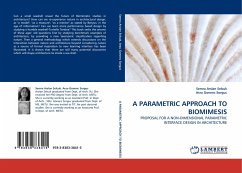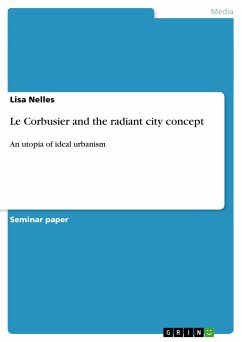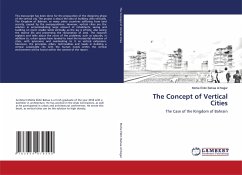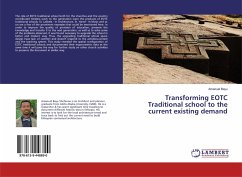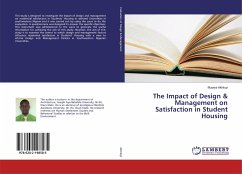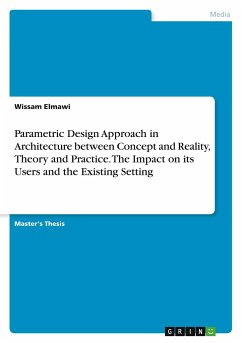
Parametric Design Approach in Architecture between Concept and Reality, Theory and Practice. The Impact on its Users and the Existing Setting
Versandkostenfrei!
Versandfertig in 1-2 Wochen
47,95 €
inkl. MwSt.

PAYBACK Punkte
0 °P sammeln!
Master's Thesis from the year 2022 in the subject Art - Architecture / History of Construction, grade: 1.8, Anhalt University of Applied Sciences (Bauhaus Dessau), course: Design Research, language: English, abstract: This research investigates the evaluation of parametric-based architecture in relation to its users and the surrounding environment. The Phaeno Science Centre in Germany serves as a case study, raising questions about how well the building fits with its local setting and users. The study adopts a qualitative and quantitative methodology known as Post-Occupancy Evaluation, which s...
Master's Thesis from the year 2022 in the subject Art - Architecture / History of Construction, grade: 1.8, Anhalt University of Applied Sciences (Bauhaus Dessau), course: Design Research, language: English, abstract: This research investigates the evaluation of parametric-based architecture in relation to its users and the surrounding environment. The Phaeno Science Centre in Germany serves as a case study, raising questions about how well the building fits with its local setting and users. The study adopts a qualitative and quantitative methodology known as Post-Occupancy Evaluation, which seeks feedback from building users and architects. The research emphasizes the need to distinguish between the behavior of complex systems and their users and the existing setting. It stresses that evaluating parametric architecture requires an understanding of the whole context rather than just a single structure. The study also suggests that architects should focus on the connectivity between built structures and users, rather than ignoring it. In addition, the study highlights the importance of evaluating architecture in general, and parametric architecture, in particular, given its widespread use in our built environment. It advocates for the inclusion of the Post-Construction Evaluation phase in the conventional core phases of the Architectural Design Process, making it just as important as other stages. The methodology for this study involves gathering data from numerous sources, including users, locals, architects, professionals, journals, newspapers, libraries, interviews, surveys, site visits, and personal reflections. By incorporating multiple viewpoints, the study hopes to gain a comprehensive understanding of the perceptions surrounding parametric architecture. Overall, the study emphasizes the importance of evaluating parametric-based architecture in relation to its users and the existing environment. It stresses the need for architects to focus on the functionality and performance of buildings, rather than just their initial appearance, and to recognize the value of feedback from users in improving future designs.



